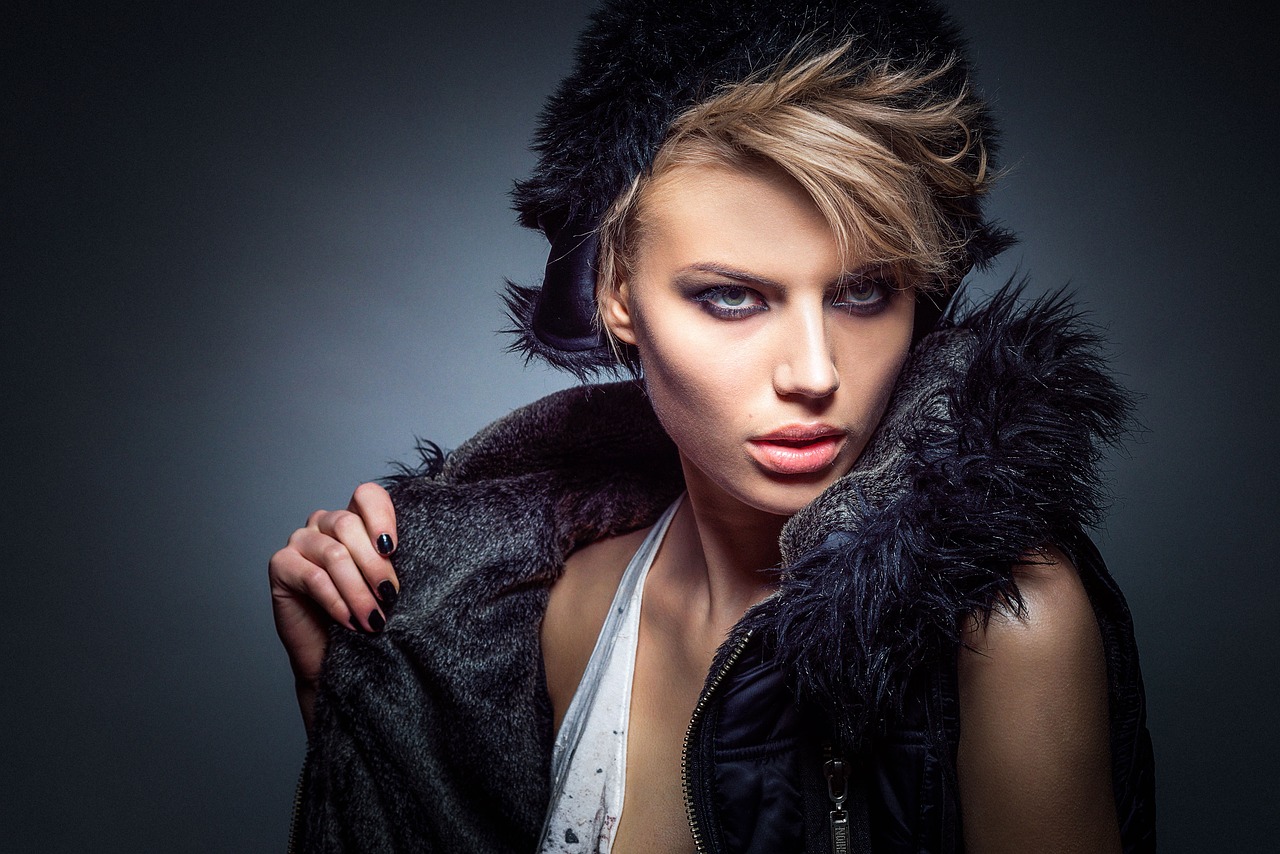Key Lighting Techniques
Lighting is a crucial element in Portrait Photography Tips that can make or break your portrait. One key technique to enhance your portraits is to use soft, diffused light. Harsh light can create unflattering shadows and highlights on your subject, while soft light provides a more gentle and even illumination, resulting in a more pleasing look. You can achieve soft light by shooting on an overcast day or using a diffuser to soften the sunlight.
Another important lighting technique is to pay attention to the direction of light. Front lighting, where the light source is behind the camera, can illuminate your subject evenly but may lack depth and dimension. Experiment with side lighting or backlighting to create more dramatic effects and interesting shadows in your portraits. By varying the angle and direction of light, you can add depth and texture to your images, making them more visually appealing.

Choosing the Right Background
When selecting the perfect background for your portraits, it’s essential to consider the mood and atmosphere you want to convey. A clutter-free background like a plain wall or a simple landscape can help draw attention to your subject, making them the focal point of the image. On the other hand, a busy or textured background can add depth and interest to your photos, creating a more dynamic composition.
Additionally, keep in mind the colors and patterns of the background to ensure they complement rather than clash with your subject. Choosing a background that contrasts with your subject can create a striking visual impact, while opting for harmonious colors can evoke a sense of cohesion and unity in your portraits. Experiment with different background options to discover what works best for the mood and style you want to achieve in your photography.
Posing Tips for Natural Looks
Finding the right pose for a natural look in portraits can make all the difference. One tip is to avoid stiff or forced poses – instead, encourage your subject to move in a way that feels comfortable and genuine. This will help capture their true personality and emotions, resulting in a more authentic image.
Furthermore, try incorporating movement into your poses. Encouraging your subject to walk, dance, or interact with their surroundings can add dynamism and energy to the photos. Natural looks are all about capturing candid moments and genuine emotions, so don’t be afraid to experiment with different poses and movements to achieve that effortless vibe.
Utilizing Props for Creative Portraits
When it comes to creating unique and eye-catching portraits, props can be a game-changer. Adding props to your portraits can add depth, visual interest, and personality to your photos. Whether it’s a vintage chair, a bouquet of flowers, or a quirky hat, props can help tell a story and set the mood for your portrait shoot.
When choosing props for your portraits, think about the overall look and feel you want to achieve. Consider the colors, textures, and shapes that will complement your subject and enhance the visual impact of the photo. Don’t be afraid to get creative and think outside the box – sometimes the most unexpected props can make for the most memorable portraits. Just remember, the key is to keep the focus on your subject and use props to enhance the overall composition of the image.
Understanding Composition and Framing
When it comes to taking captivating portraits, how you frame your subject plays a crucial role in the overall composition. Think about the rule of thirds – it’s not just some fancy photography jargon. Position your subject off-center, either to the left or right, to create a more visually appealing image. This simple trick can instantly elevate your portraits from mundane to mesmerizing.
Another aspect to consider is leading lines. Look for natural lines in the environment or use props strategically to guide the viewer’s eye towards the main subject. Whether it’s a winding road, a row of trees, or a staircase, leading lines can add depth and interest to your portraits. Experiment with different angles and perspectives to find the most dynamic composition that draws the viewer in.
Creating Depth with Foreground Elements
When capturing portraits, incorporating foreground elements can add visual interest and depth to your photos. By placing objects like branches, flowers, or architectural details in front of your subject, you can create a sense of three-dimensionality that draws the viewer’s eye into the scene.
Foreground elements not only frame your subject but also add a storytelling element to your portraits. They can help set the mood or provide context to the overall composition, giving viewers more to explore and connect with in the image. Experiment with different foreground elements to see how they can enhance your portraits and make them more dynamic and engaging.
Portrait Photography Tips
Playing with Different Angles
When it comes to capturing dynamic and interesting portraits, playing with different angles can make a huge difference in the final outcome. By exploring various perspectives, you can add depth and visual interest to your images. Instead of taking all your shots at eye level, try getting down low or shooting from above to create unique and captivating photos that stand out.
Experimenting with different angles also allows you to highlight certain features or aspects of your subject that you want to emphasize. Whether you want to showcase the stunning eyes of your model or capture the intricate details of a prop, adjusting your angle can help you achieve your desired effect. Remember, there are no strict rules when it comes to photography, so feel free to get creative and play around with angles to discover what works best for each individual shot.
Portrait Photography Tips
Using Natural Light to Your Advantage
When it comes to photography, natural light can be your best friend. The soft, diffused light of early morning or late afternoon can create a beautiful glow on your subject, giving your portraits a warm and inviting feel. To take advantage of this flattering light, schedule your photo shoots during these times of the day.
Alternatively, if you prefer a more dramatic effect in your portraits, try shooting during the golden hour, which occurs shortly after sunrise or before sunset. The golden hour light is rich and golden, casting long shadows and adding depth and dimension to your photos. Experiment with different angles and positions to see how the light interacts with your subject, and don’t be afraid to play around with shadows and highlights for added interest.
Editing Tricks for Flawless Portraits
When it comes to perfecting your portraits through editing, there are a few key tricks that can truly make your images pop. Firstly, don’t be afraid to play around with the exposure and contrast levels to enhance the overall look of your portrait. Adjusting these settings can help to bring out details in the image and make your subject stand out more effectively. Additionally, paying attention to skin tones and using selective color adjustments can help to achieve a natural and flattering look in your portraits. Remember, less is often more when it comes to editing, so try to maintain a balance between enhancing your image and keeping it looking realistic.
Another essential editing trick for flawless portraits is to focus on sharpening and enhancing your subject’s eyes. The eyes are often the focal point of a portrait, so ensuring they are crisp and clear can really make your image come to life. Utilize tools like the sharpening brush or clarity adjustments to bring out the details in the eyes and make them pop. Additionally, don’t forget to smooth out any distractions or imperfections in the background to draw more attention to your subject. By taking the time to refine these details in your editing process, you can create stunning and polished portraits that truly shine.
- Play around with exposure and contrast levels
- Adjust skin tones and use selective color adjustments
- Focus on sharpening and enhancing the subject’s eyes
- Smooth out distractions in the background to draw attention to the subject
Finding Inspiration for Unique Shots
Sometimes, inspiration strikes when you least expect it. Whether you’re walking through a bustling city street or exploring a serene forest, keep your eyes open for the unexpected. Look for interesting patterns, textures, and colors that might usually go unnoticed. These small details can spark your creativity and lead to unique and captivating shots.
Don’t be afraid to step out of your comfort zone and try new things. Experiment with different angles, perspectives, and compositions to add a fresh and dynamic element to your photography. Embrace spontaneity and allow yourself to be flexible in your approach. Remember, the most memorable shots often come from moments of genuine curiosity and exploration.
How important is lighting in photography?
Lighting is crucial in photography as it can drastically affect the mood and quality of your shots. Experiment with different lighting techniques to achieve unique and stunning results.
How can I choose the right background for my portrait shots?
Consider the mood and theme you want to convey in your portrait and choose a background that complements it. Simple backgrounds can often highlight the subject more effectively.
Any tips for posing naturally in portraits?
To achieve natural poses, encourage your subjects to relax and engage with each other. Candid moments often make for the best shots.
How can props enhance my portrait photography?
Props can add personality and creativity to your portraits. Experiment with different props to add a unique touch to your shots.
What is composition and framing in photography?
Composition refers to how elements are arranged in a photograph, while framing involves how the subject is placed within the image. Both are key in creating visually appealing shots.
How can I create depth in my portraits?
Incorporating foreground elements can add depth to your portraits and make them more visually interesting. Experiment with different elements to create depth in your shots.
What are some tips for playing with different angles in photography?
Changing your perspective and shooting from different angles can lead to more dynamic and interesting shots. Don’t be afraid to get low or high to capture unique angles.
How can I make the most of natural light in my portraits?
Utilize natural light to your advantage by paying attention to the direction and quality of the light. Soft, diffused light can often produce flattering results.
Any editing tricks for improving portrait shots?
Experiment with editing tools to enhance the colors, contrast, and overall look of your portraits. Just be careful not to over-edit and lose the natural beauty of the shot.
Where can I find inspiration for unique portrait shots?
Look for inspiration in everyday life, nature, art, and other photographers’ work. Don’t be afraid to try new things and push your creative boundaries to capture truly unique shots.
follow Portrait Photography Tips on Pinterest.

